“I know what you’re thinking,” says MythBusters co-host Grant Imahara, standing in front of a conveyer belt chugging out french fries. “These look like potatoes, but are they really potatoes?”
Such is the question many people find themselves asking about McDonald’s signature french fries.
And so, as a part of the fast food chain’s new honesty-is-the-best-policy marketing campaign, consumers are getting a firsthand look at the assembly process.
“Are the fries even made out of potatoes? Are they ground up and mushed into the fry shape?” Imahara asks.
Mickey D’s apparently has the answers.
Read next: Watch McDonald’s Prove the McRib is Made of Actual Food
Listen to the most important stories of the day.
17. The Krusty Burger
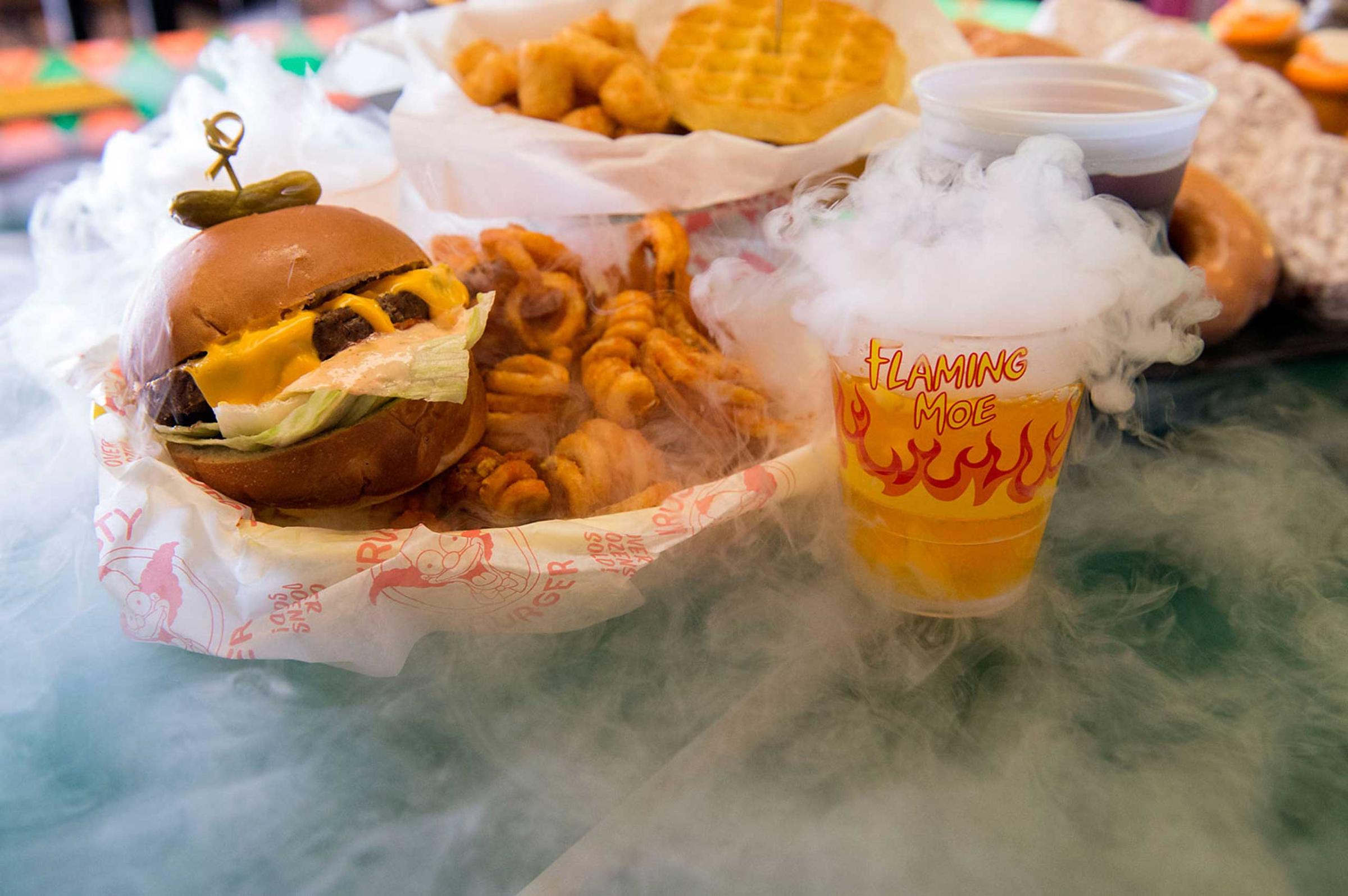
The fictional Simpsons hangout was so popular, it became a real-life restaurant in 2013, when Universal Studios Orlando opened a Simpsons theme park. Ironically, menu staples like the Clogger Burger and the Mother Nature Burger—dismissed as gross on the cartoon—fetch over $10 in real life.
16. The Ghost Burger
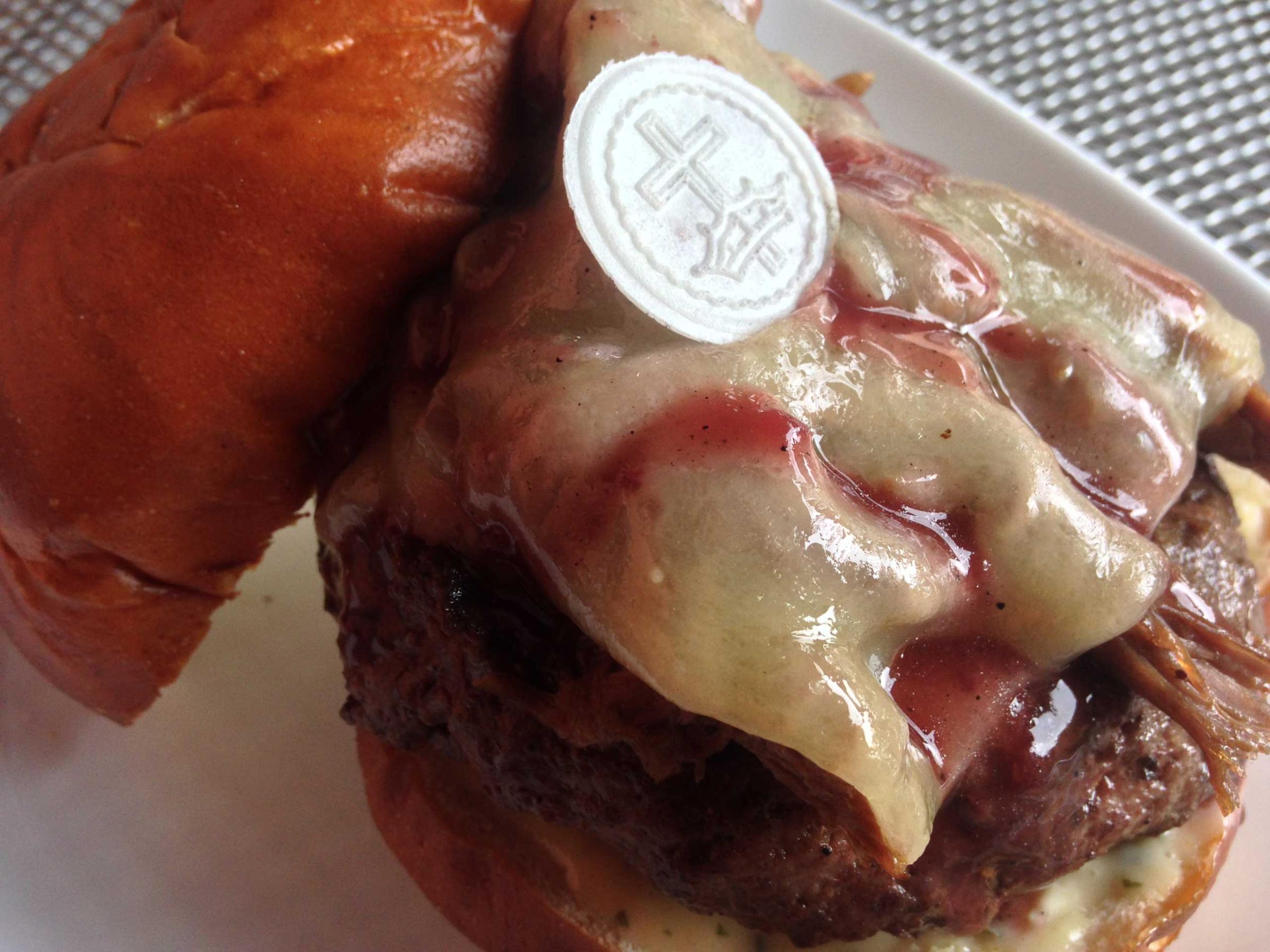
In October of 2014, Chicago heavy-metal-themed bar Kuma’s Corner launched one of the most outrageous burgers to date: the Ghost Burger—it’s named after Swedish metal band Ghost B.C.—was topped with an unconsecrated Communion wafer. The dish sold well, but angered Catholics (and garnered national headlines), prompting the owners to donate $1,500 to Catholic Charities of the Archdiocese of Chicago.
15. The Varsity Burger
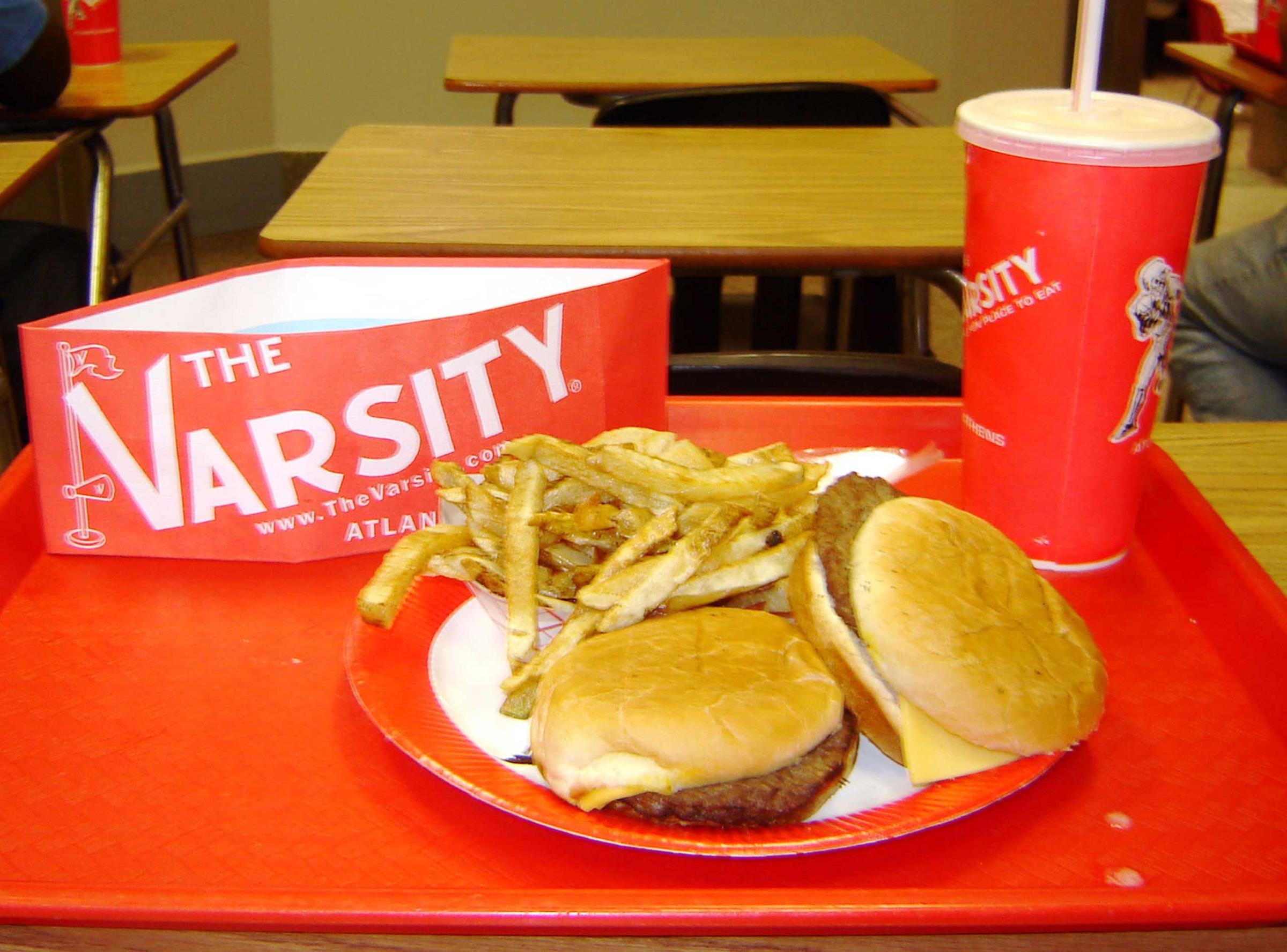
The ordering lingo for this Atlanta staple, which debuted in 1928, is almost as delicious as the burger itself: you get it “all the way” in lieu of “with onions,” and “walk a steak” replaces “to-go.” These branding gimmicks were later replicated by burger chains like In-N-Out, whose secret menu (see: “animal style” and “protein style”) has helped lure millions of customers.
14. The Umami Burger
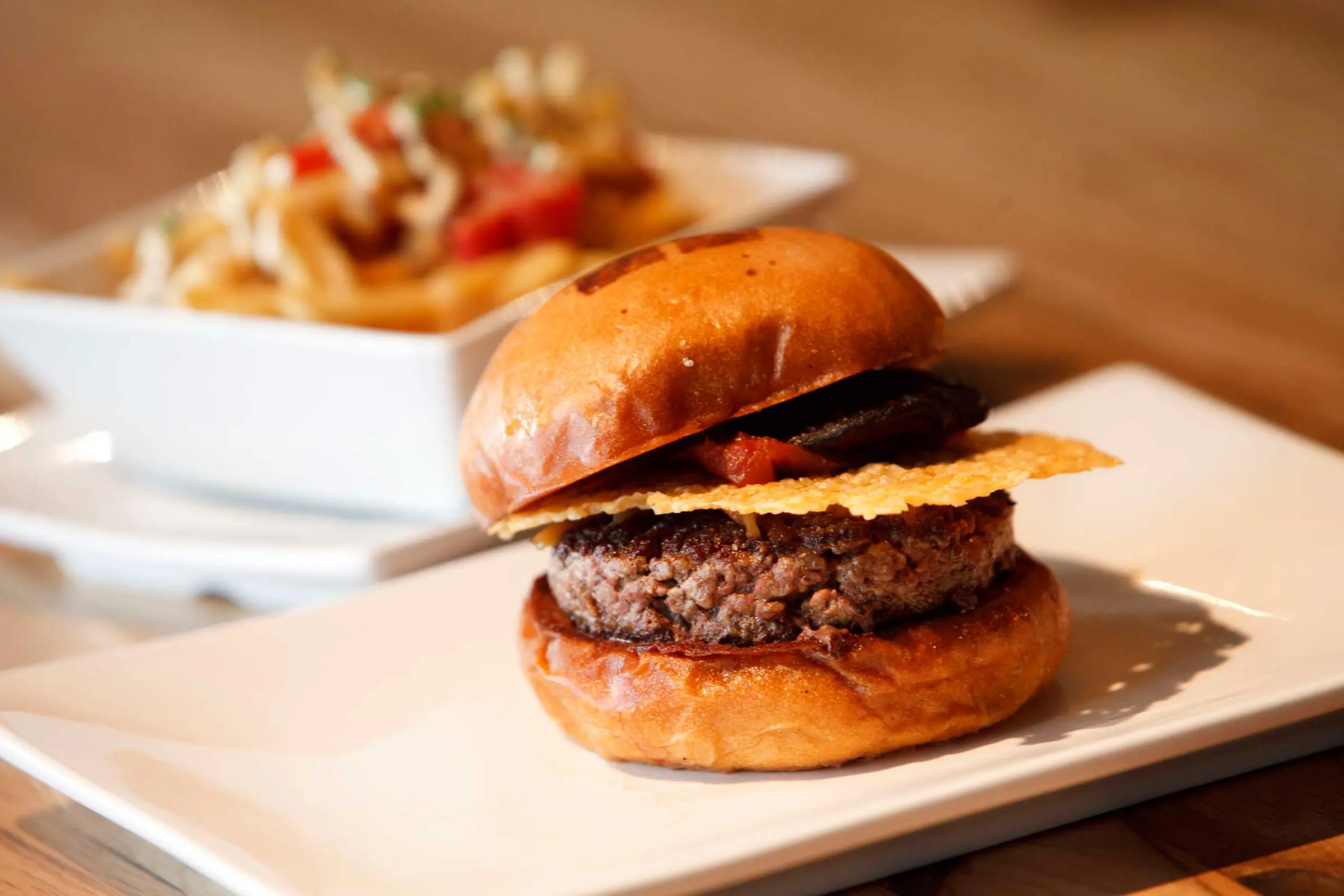
Arguably the first “modernist cuisine” patty, the Umami Burger—unveiled by Adam Fleischman in 2009—is meant to taste like, well, umami (a savory taste embodied in MSG), incorporating such toppings as soy-roasted tomatoes, parmesan crisps and pickled ginger. The patty’s success has fueled the opening of 21 additional locations.
13. The Ray’s Hell Burger
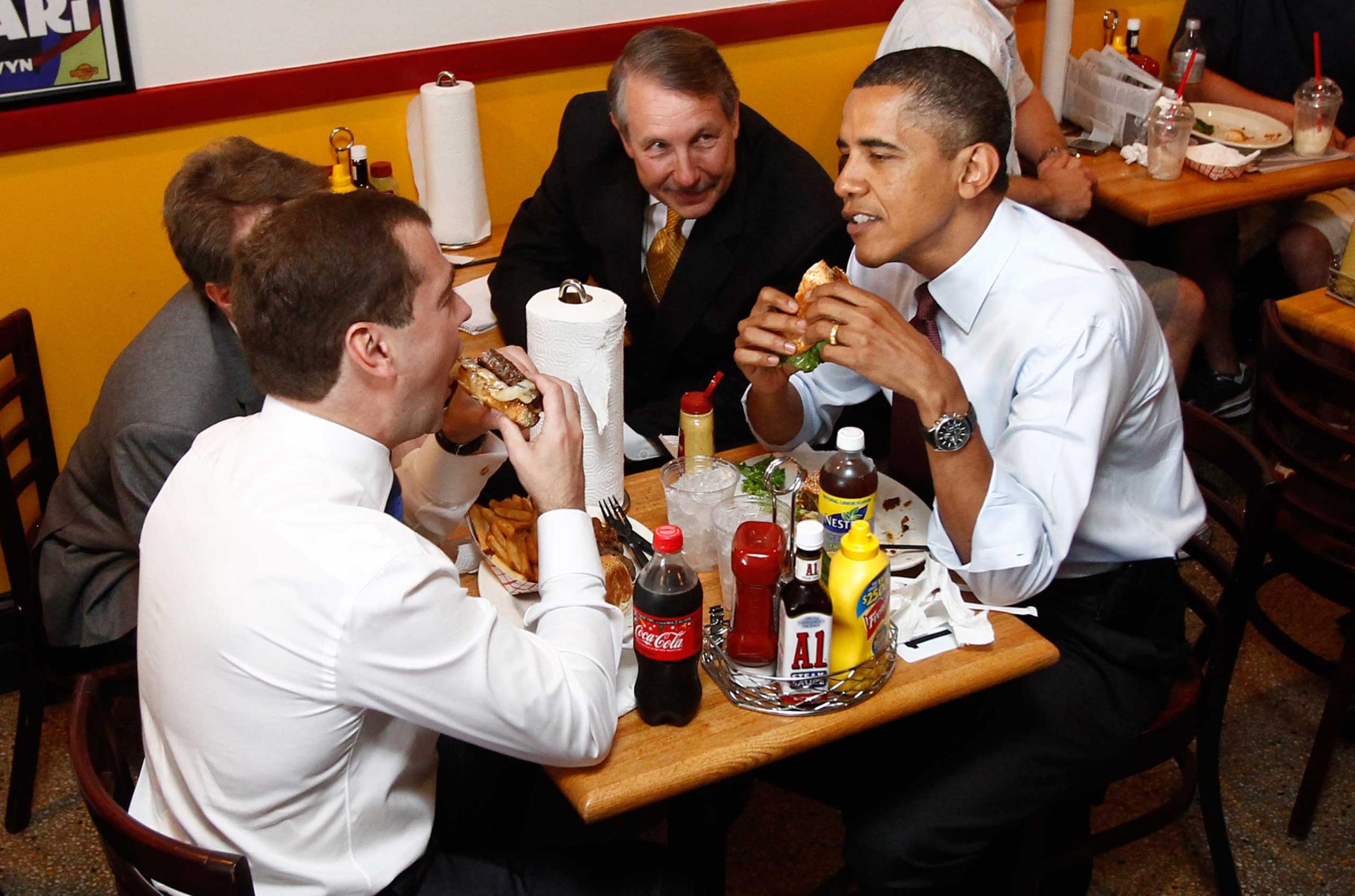
President Obama treated then-Russian President Dmitri Medvedev to one of these patties in Arlington in 2010—Obama’s was reportedly ordered plain, while Medvedev added jalapeños, mushrooms and onions. And the meal may have fostered intimacy between the two leaders: less than two years later, Obama was caught on a hot mic asking Medvedev for space on missile defense policy, explaining, “This is my last election. After my election I have more flexibility.” Medvedev was amenable.
12. The Ramen Burger
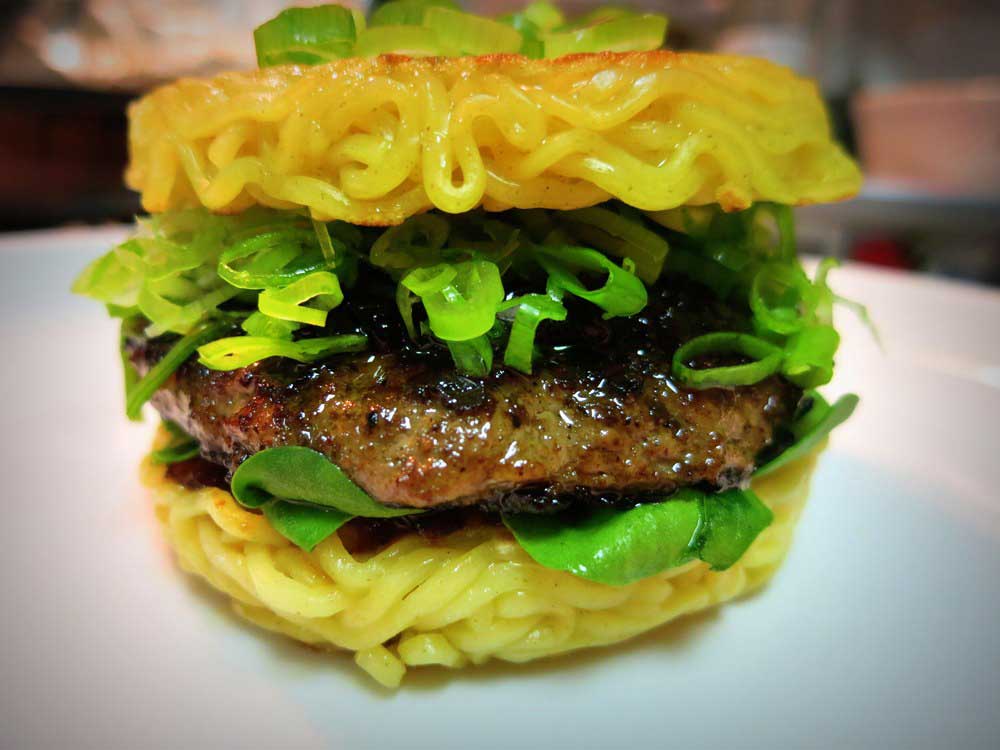
This so-called hybrid burger—two parts ramen, one part beef patty—drew vast crowds at the Smorgasburg outdoor food market in Brooklyn throughout the summer of 2013 (mere months after the cronut craze). Soon, the Keizo Shimamoto creation had enough hype to debut in L.A. and even inspired a knockoff in the Philippines, cementing its status as a global obsession. Alas, there’s no official ramen-burger restaurant yet—would-be tasters have to monitor its Facebook page to see where it’ll be served next.
11. The MOS Burger
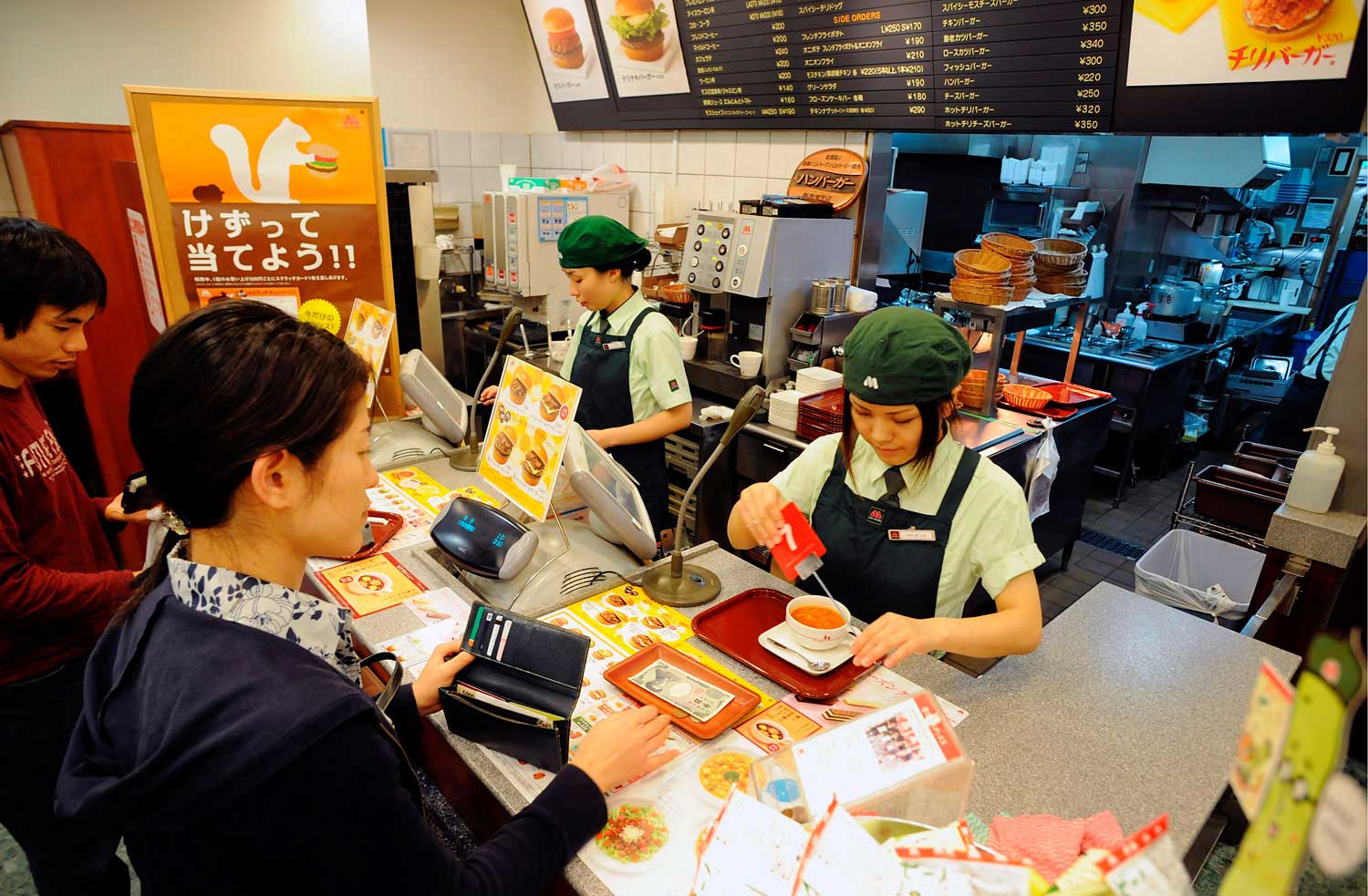
The burger may be a mostly American creation, but many other countries have launched their own chains—and burger variants—to capitalize on its success. Among the most prominent: MOS (a.k.a. “Mountain Ocean Sun”) Burger, which opened in Japan in 1972. Although its signature patty mimics the U.S. classic, other items are designed around Japanese tastes; there’s a teriyaki burger and a grilled salmon rice burger. Similar tactics have worked in other regions, too: in India, Nirula’s chain serves potato and mint patties in lieu of beef, and in Malaysia, Ramly Burger offers patties wrapped in an egg envelope inside the bun.
10. The Jucy Lucy
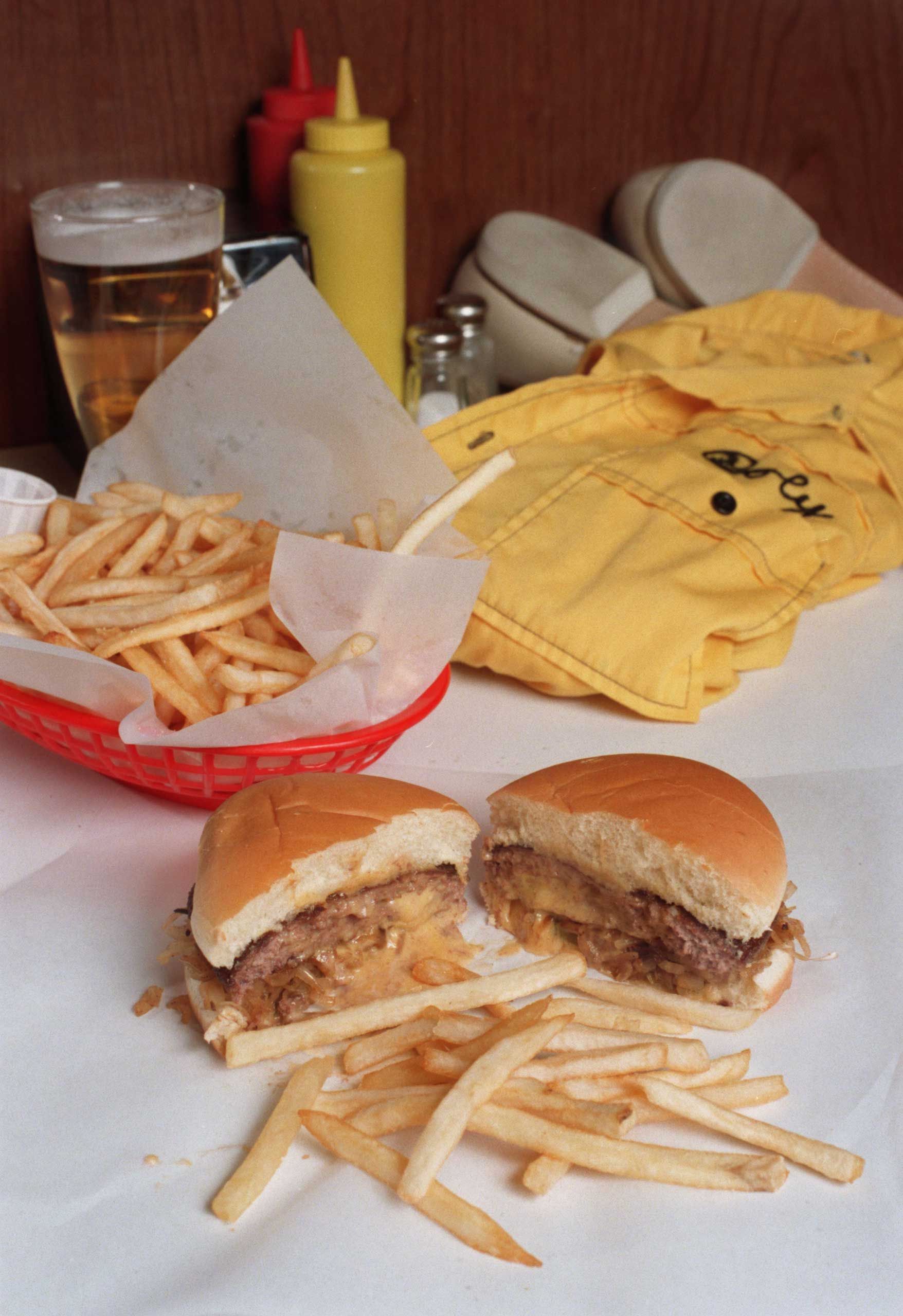
Although this twist on the cheeseburger—in which the cheese is melted inside the patty—was reportedly invented in the 1920s, when chefs were still experimenting with the burger, it gained national attention in 2008, thanks to a feud between two Minneapolis bars that both claim to have “invented” it. Since then, there have been numerous imitators, proving that a little innovation and a dash of hype is all it takes to reinvigorate enthusiasm for a classic.
Correction: The original version of this story misstated the date of invention of the Jucy Lucy. It was put on the menu at Matt’s in 1954.
9. The Lab-Grown Burger
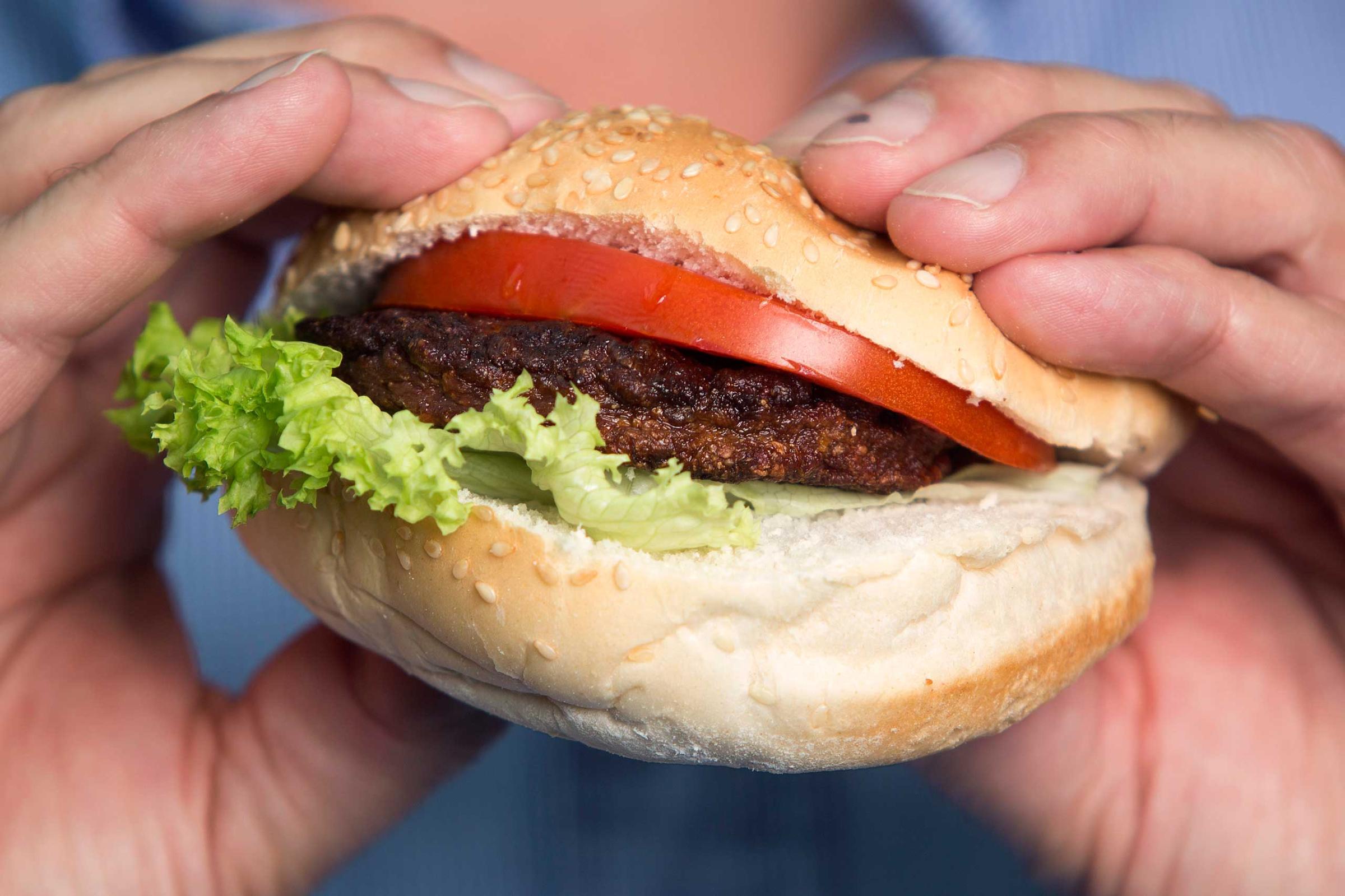
With global demand for meat expected to grow 60% by 2050, the amount of farmland and grain needed to feed those chickens, pigs and cows may be unsustainable. But this burger, which was unveiled last year by Mark Post of Maastricht University, has none of those hang-ups—it’s grown in a lab from cow stem cells, which means it may even be palatable for vegetarians. The only issue: for now, it carries a $325,000 price tag.
8. The Quadruple Bypass Burger
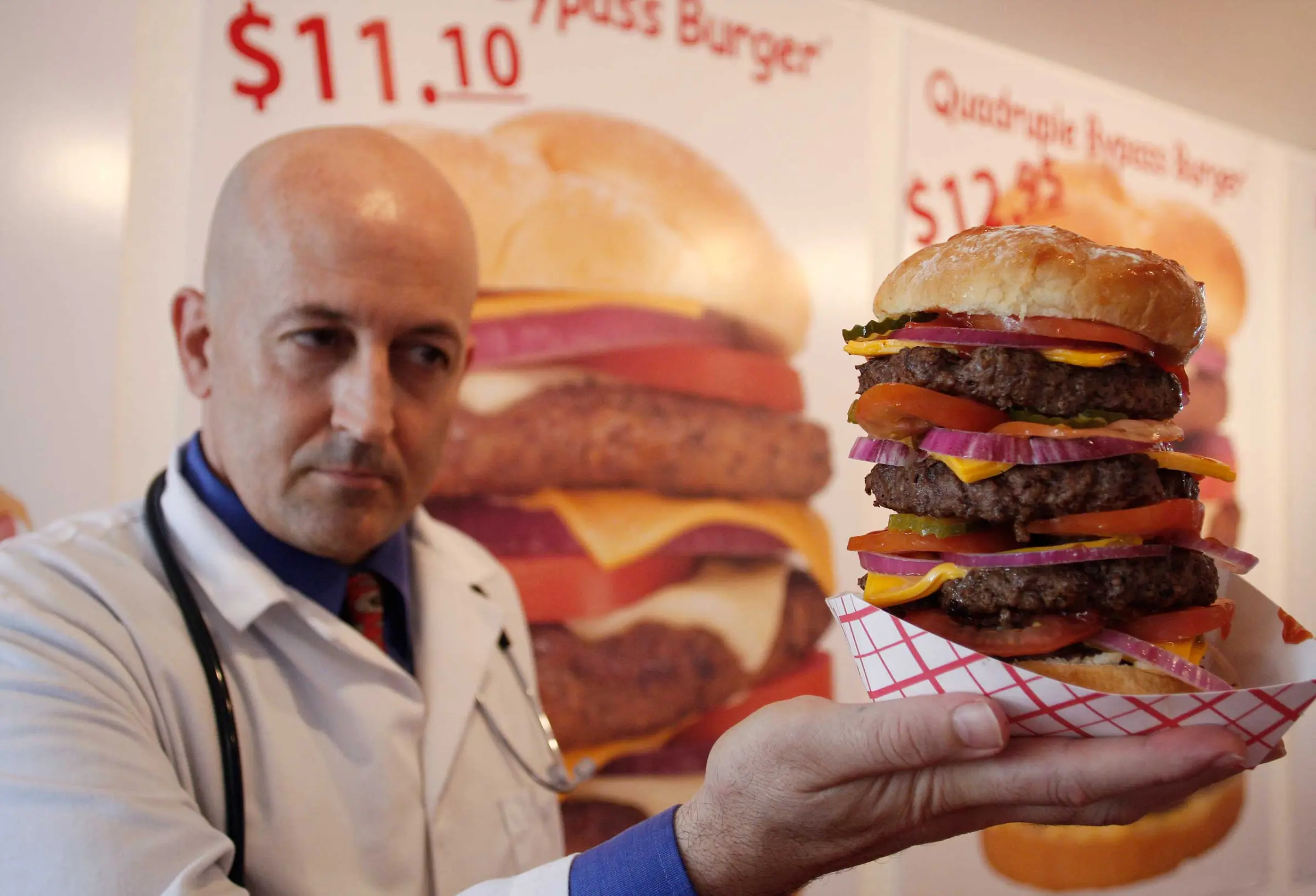
Jon Basso, owner of The Heart Attack Grill, has drawn national attention (and outrage) for his gluttonous offerings since the restaurant first opened in 2005, offering free meals for those over 350 pounds. His most notorious dish is this behemoth, which layers eight slices of cheese between four half-pound patties and clocks in at nearly 10,000 calories. One regular customer, a kind of spokesman for the restaurant, actually died in front of the Las Vegas eatery in 2013. The burger became an exemplar of the more-is-more burger culture, preceding a series of other gluttonous dishes including Paula Deen’s doughnut-encased Lady’s Brunch Burger.
7. The ShackBurger
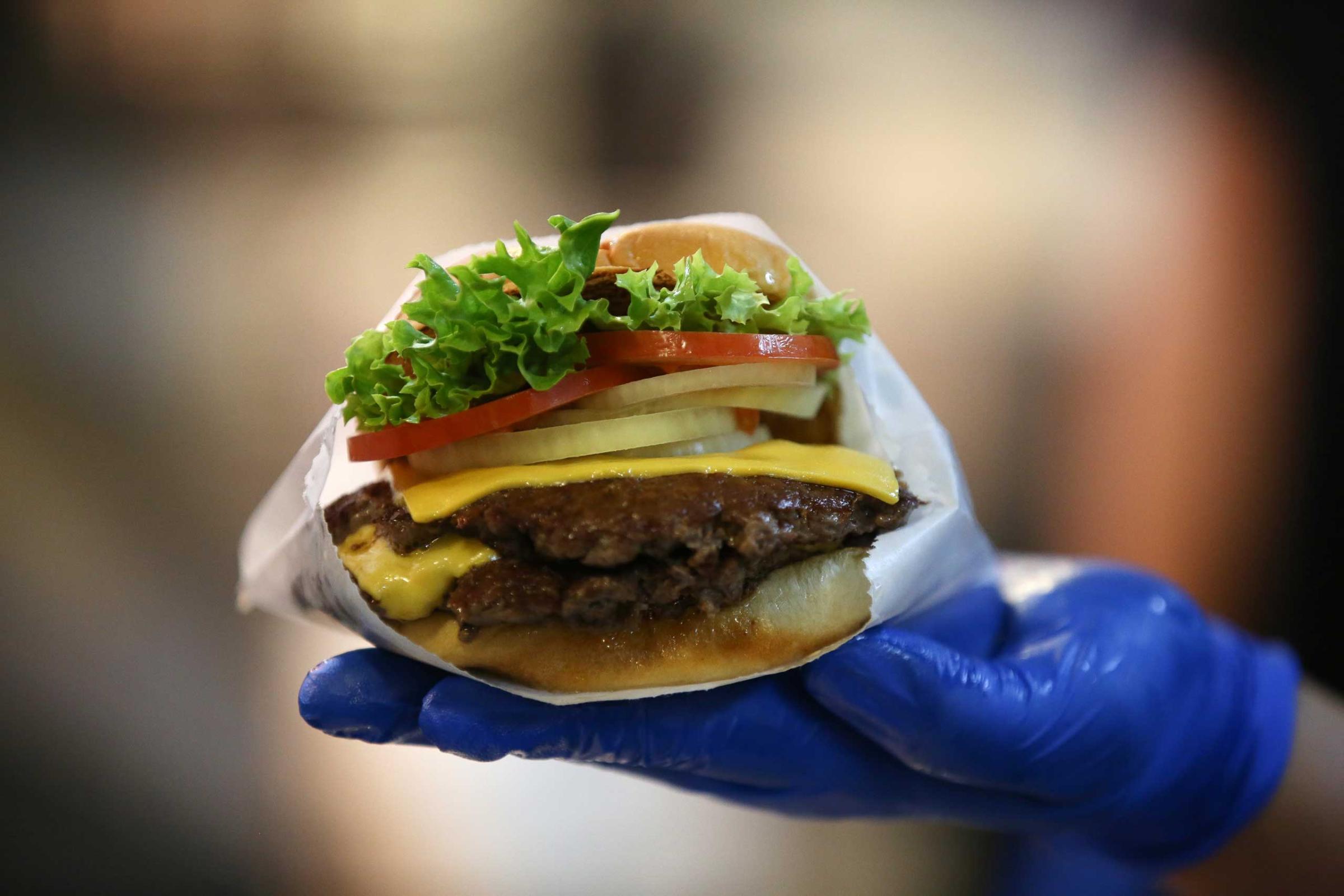
The 2004 invention—topped with a tangy, secret-recipe ShackSauce—was the first burger to start a food craze, inspiring hordes of eaters to wait in lines that stretched throughout New York’s Madison Square Park. And Danny Meyer’s decision to grind prime cuts of whole muscle, rather than scraps, completely transformed the way we think of burgers, according to Josh Capon, the four-time winner of New York’s Burger Bash.
6. The Gardenburger
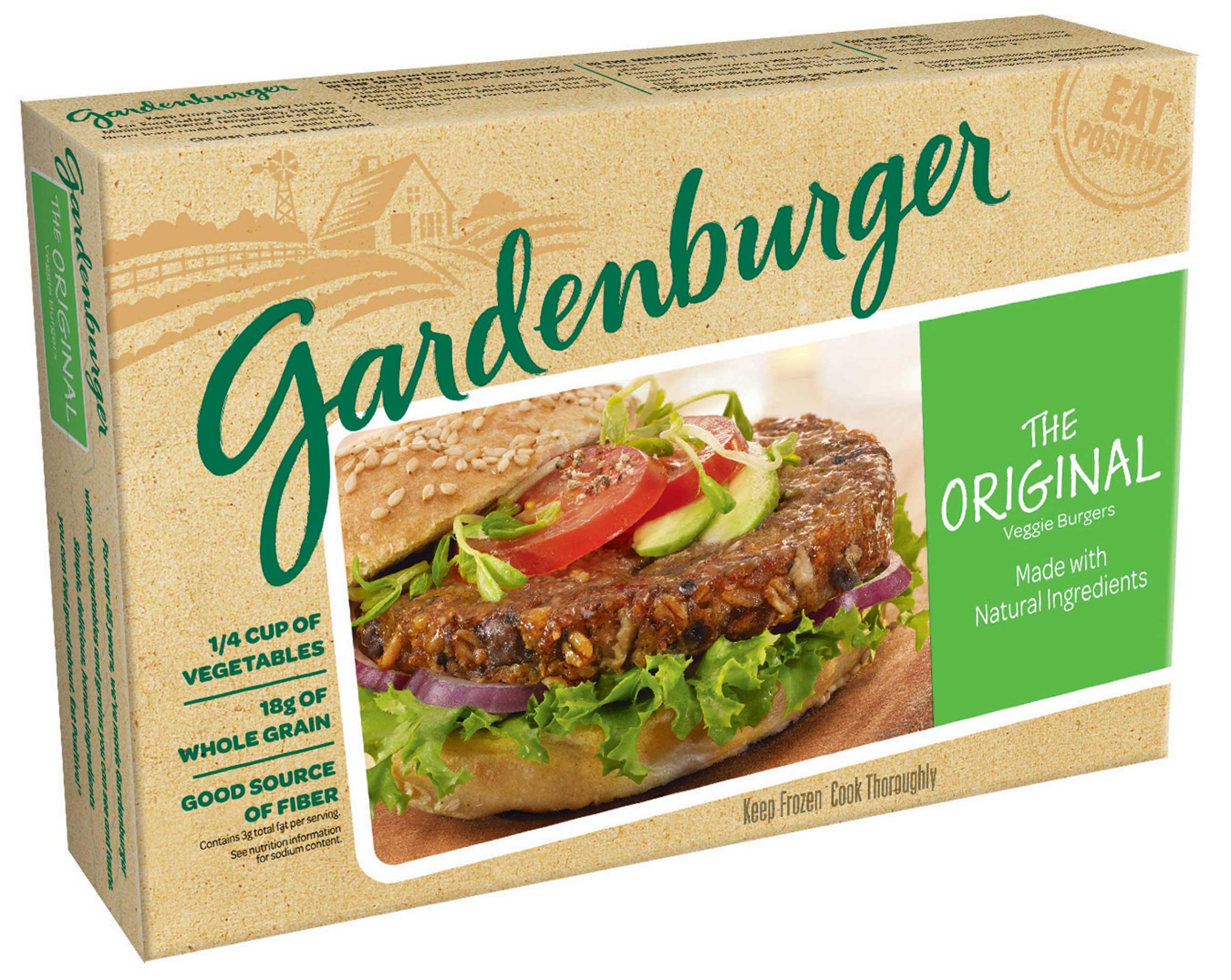
The original veggie burger was invented in 1981 at—go figure—the Gardenhouse, an Oregon vegetarian restaurant, and it consisted mainly of leftover vegetables and grains. Before long, it was the most popular item on the menu, living on even after the restaurant closed as a frozen-food item that was packaged and sold internationally. Today, the Gardenburger and its imitators, from MorningStar to Boca, have become mainstays at conscientious cook-outs nationwide.
5. The Burger King Whopper
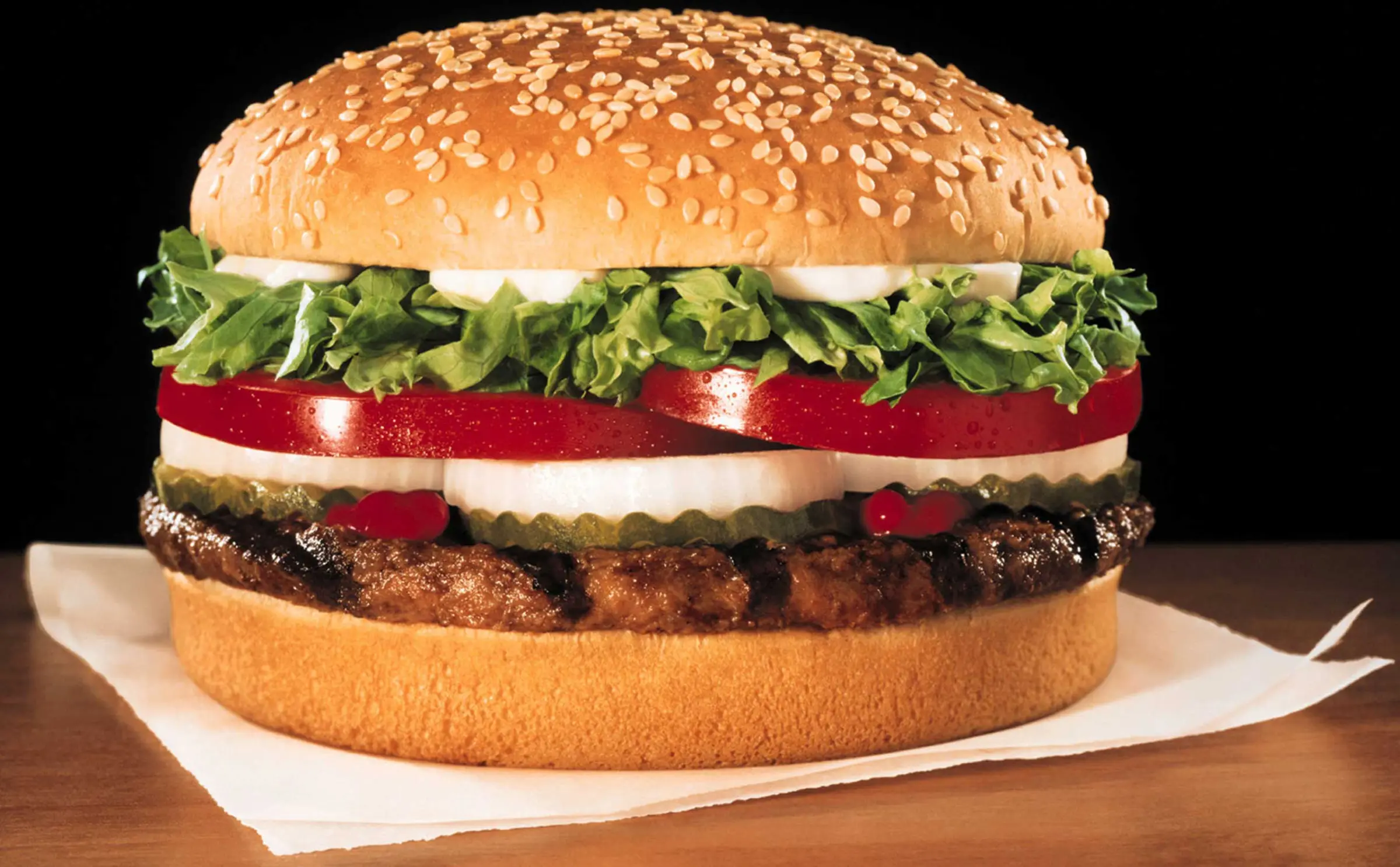
The quarter-pound patty, introduced in 1957, was the fast food industry’s first gimmick burger—developed as a premium alternative to McDonald’s, Wendy’s and others. Burger King’s stunt inspired its competitors to create their own “deluxe” versions. Among them: the McDonald’s Big Mac.
4. The 21 Burger
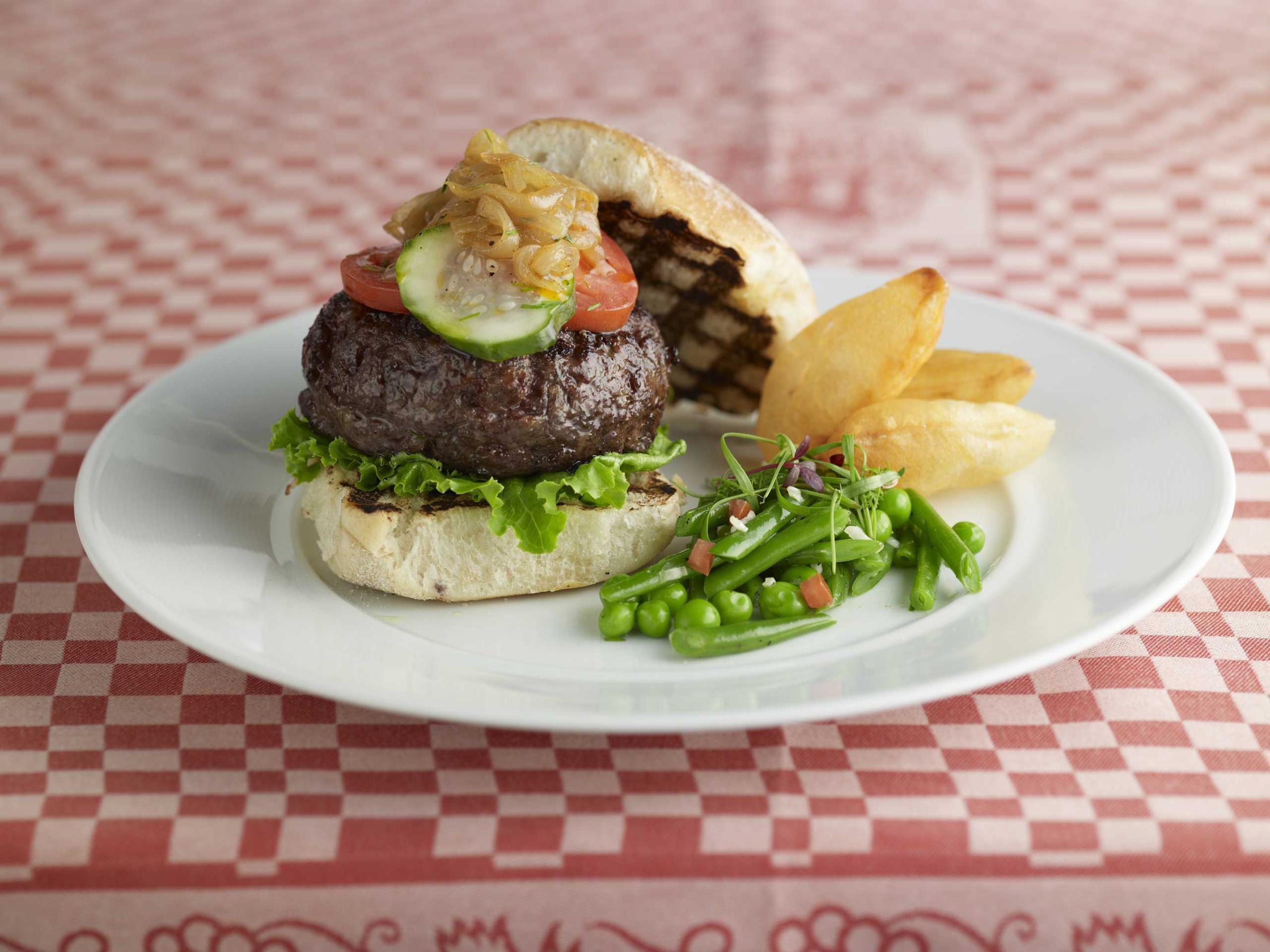
When the 21 Club introduced its gourmet burger in the late 1940s or early 1950s, New Yorkers were shocked that an upper-class establishment would offer something as lowly as the burger—and at the exorbitant price of $2.75, compared with McDonald’s’ 15 cents. Nevertheless, it was a hit. “The [higher quality] beef did make a difference,” says Andrew F. Smith, author of Hamburger: A Global History, “and it certainly was something very different than simply fast food.” The luxury burger has since become a mainstay at many higher-end restaurants, from Le Parker Meridien (a high-low offering in the lobby’s Burger Joint) to db Bistro Moderne (the truffle, foie gras and short ribs DB Burger) to Hubert Keller’s (the foie gras-topped Fleur Burger, which costs $5,000 and is served with a bottle of 1995 Château Pétrus).
3. The In-N-Out Burger
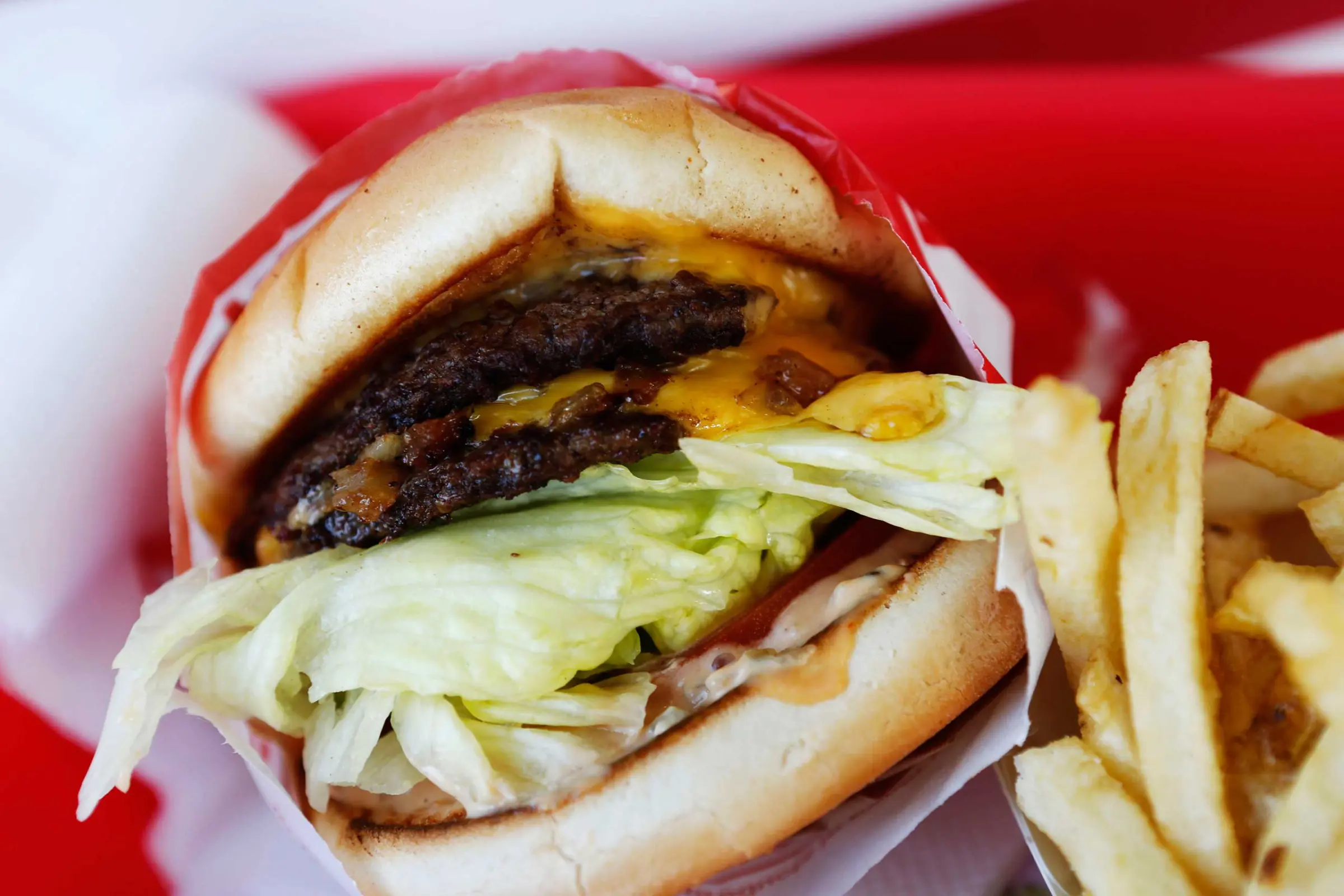
Whereas McDonald’s focused on fast, In-N-Out focused on food—its signature burger, which debuted in 1948, was made from locally sourced ground beef and fresh vegetables. That approach may have prevented In-N-Out’s expansion (it has just 294 locations today, compared with McDonald’s 34,000-plus), but it certainly hasn’t dampened foodie enthusiasm: the In-N-Out burger routinely tops best-of burger lists, and has inspired the launch of other higher-end fast food chains, such as Five Guys.
2. The McDonald’s Burger
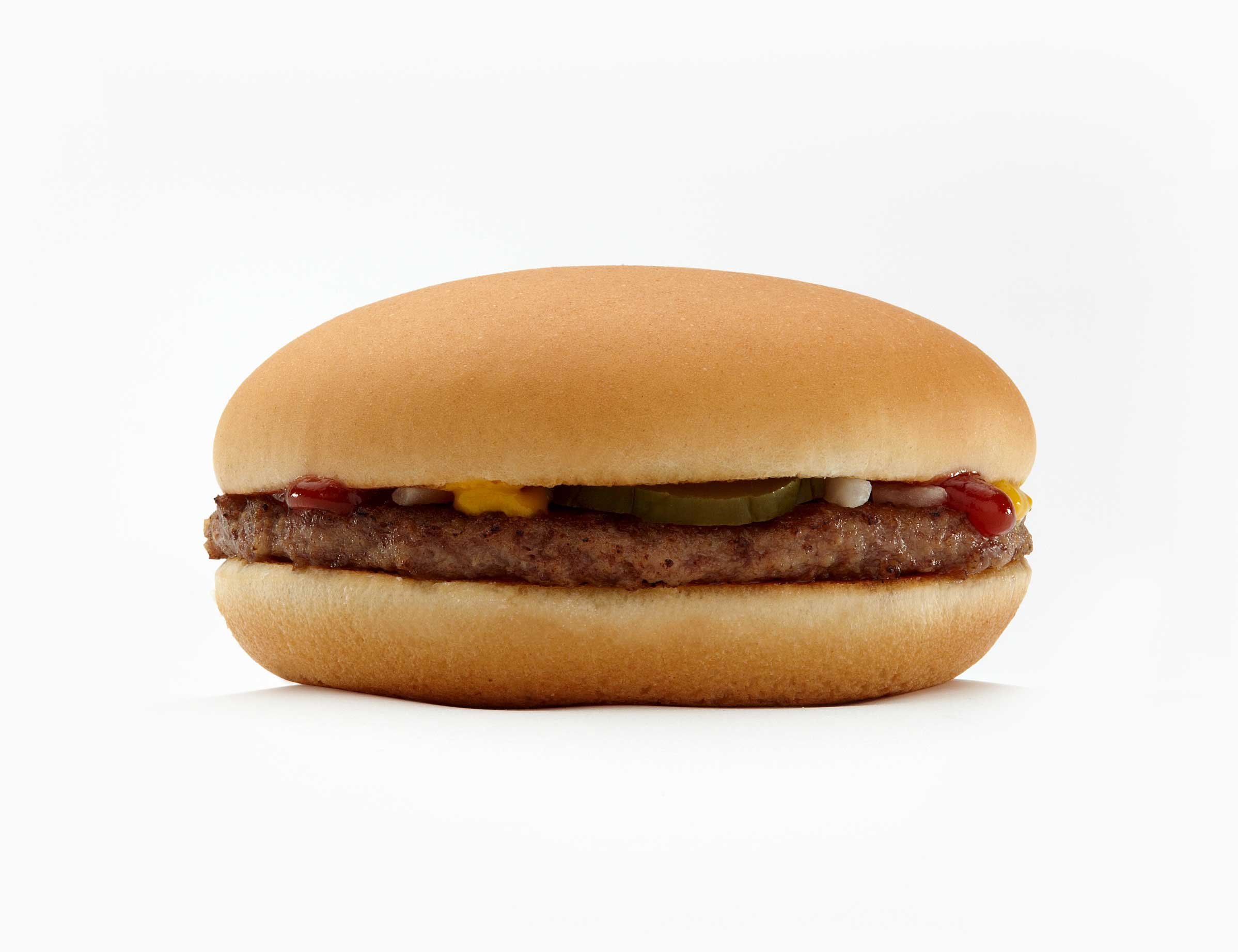
Behold, the burger that Smith says “moved fast food from a small operation to a global operation.” The original McDonald’s patty, which debuted in San Bernardino, Calif., spawned an empire that now spans 118 countries—making the price of its beefier counterpart, the Big Mac, ubiquitous enough to serve as an informal measure of purchasing-power parity, as seen in The Economist’s Big Mac index.
1. The White Castle Slider
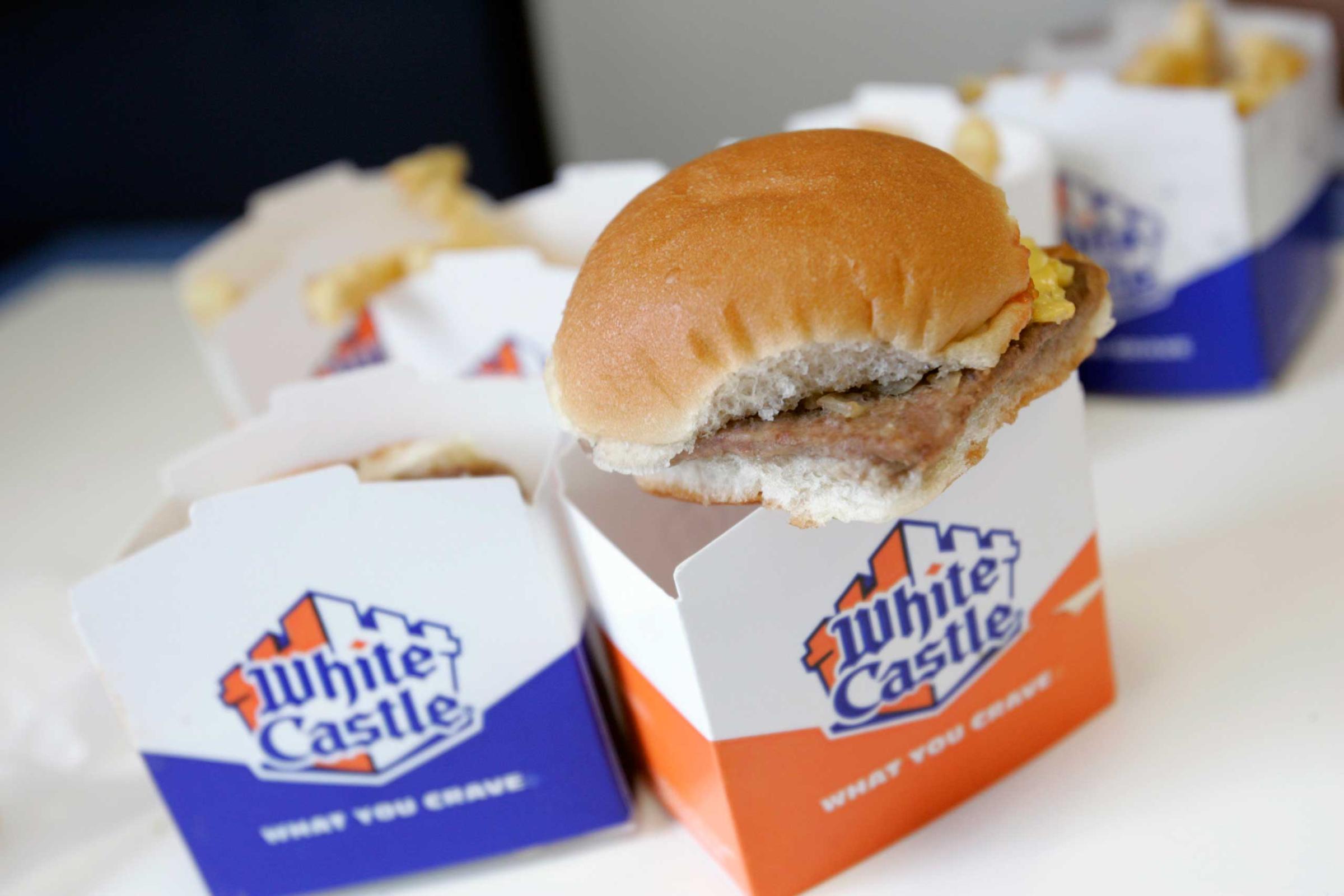
The now-iconic square patty—which debuted in 1921 at the first White Castle in Wichita, Kansas—was the first burger to spawn a fast food-empire: by 1930, White Castle had 10 U.S. locations. But more importantly, the restaurant’s emphasis on cleanliness—facilities were white and customers could watch their burger meat being ground through a window—helped quell fears that all ground beef was as unsanitary as the stuff depicted in Upton Sinclair’s best-selling The Jungle, which was released in 1906. Its success paved the way for the great American burger obsession.
More Must-Reads from TIME
- Caitlin Clark Is TIME's 2024 Athlete of the Year
- Where Trump 2.0 Will Differ From 1.0
- Is Intermittent Fasting Good or Bad for You?
- The 100 Must-Read Books of 2024
- Column: If Optimism Feels Ridiculous Now, Try Hope
- The Future of Climate Action Is Trade Policy
- FX’s Say Nothing Is the Must-Watch Political Thriller of 2024
- Merle Bombardieri Is Helping People Make the Baby Decision
Contact us at letters@time.com